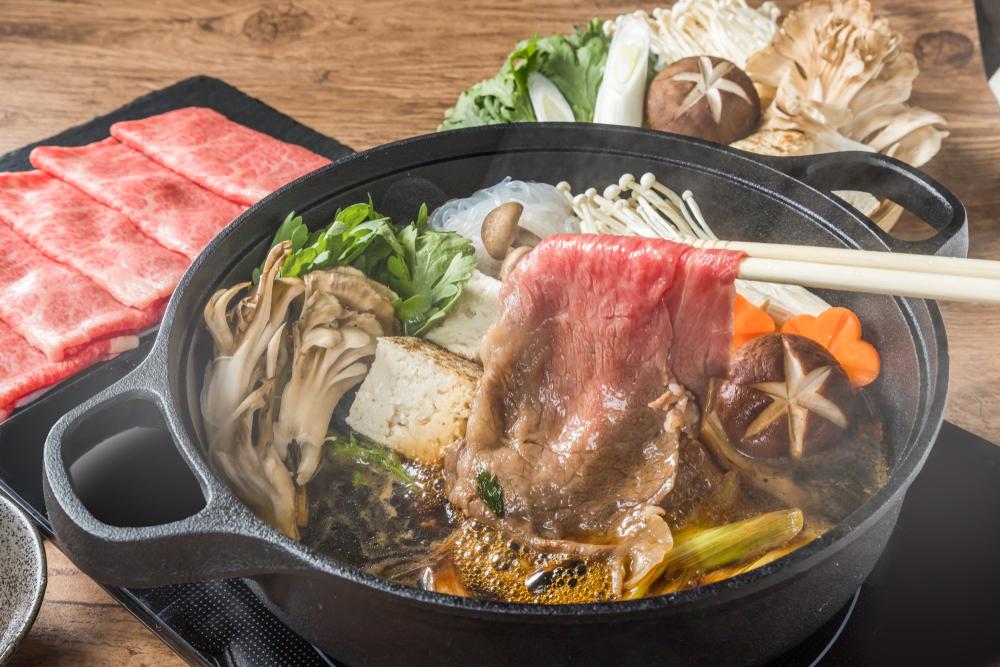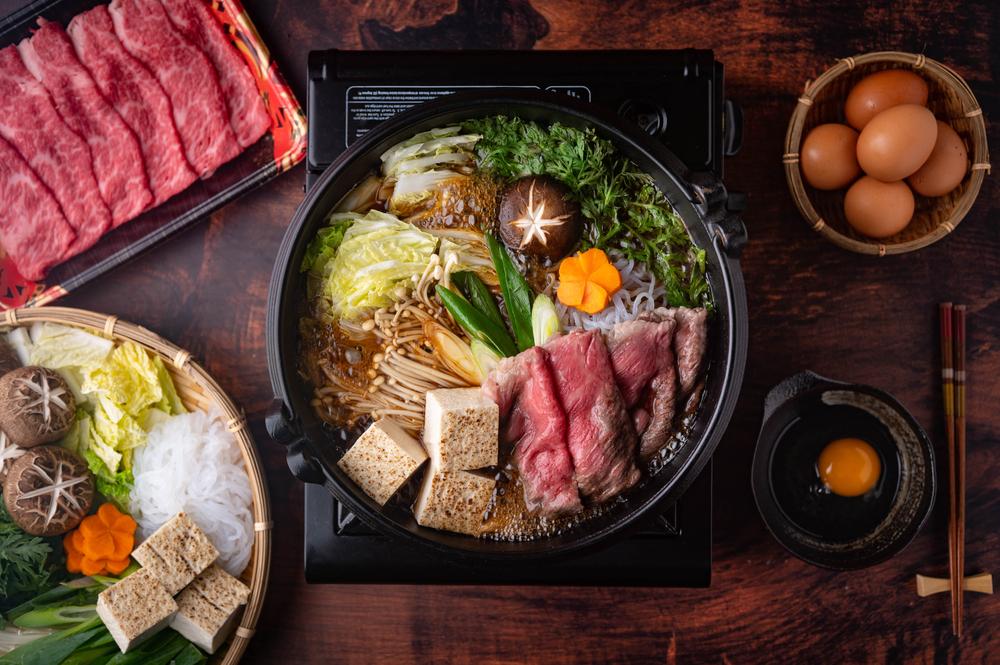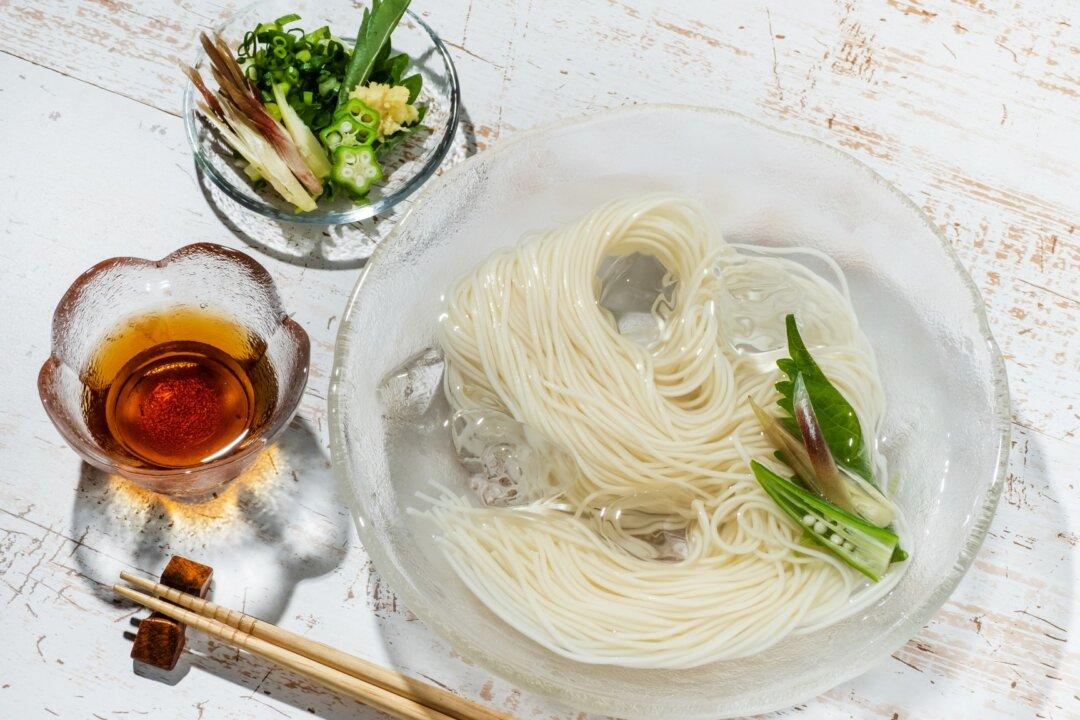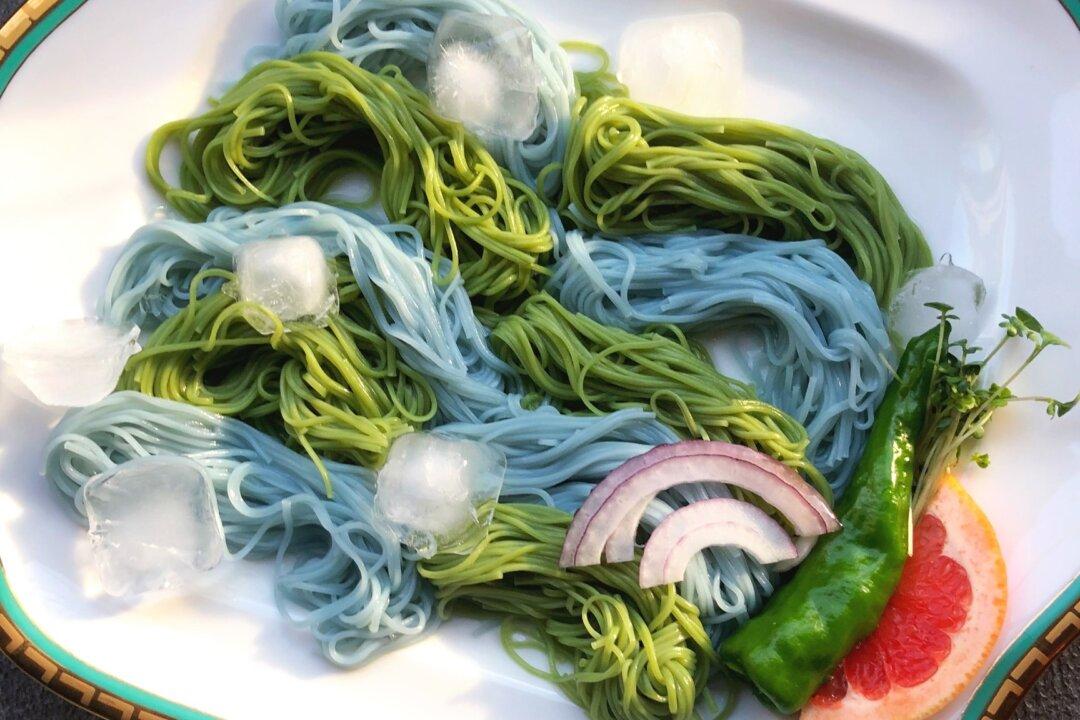To make sukiyaki at home, you can buy a special wrought-iron sukiyaki pan, or simply use a large skillet. Sukiyaki is best enjoyed when cooked at the table with a portable stove, but you can certainly prepare it all in the kitchen and bring it out to family or guests.
Purchase ingredients such as kombu for dashi, Japanese leeks, and chrysanthemum greens at Asian markets, as well as shops online. Look for well-marbled, pre-sliced beef labeled for “sukiyaki” or “shabu shabu,” or you can buy ribeye or chuck and slice it thin yourself.




